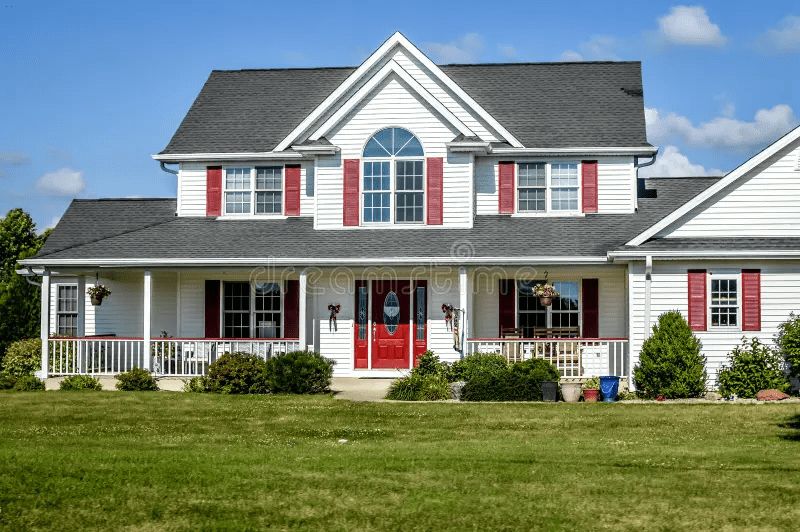Winter can be tough on your roof, especially in regions that experience heavy snow and ice. One of the most effective ways to protect your home from winter weather damage is by installing an ice guard on your roof. Ice guards, also known as ice and water shields, play a crucial role in preventing ice dams and leaks, ultimately safeguarding your home from costly repairs. In this article, we will delve into the essentials of installing ice guard on roof, including its benefits, installation process, and maintenance tips.

What is an Ice Guard?
An ice guard is a protective layer installed on the roof to prevent water damage caused by ice dams. Ice dams occur when melting snow refreezes at the eaves, creating a blockage that prevents proper drainage. This can lead to water backing up under the shingles and causing leaks. Ice guards act as a waterproof barrier, ensuring that any water that gets under the shingles is directed safely off the roof.
Benefits of Ice Guards
- Prevent Ice Dams: Ice guards help to prevent the formation of ice dams by providing a waterproof barrier that stops water from backing up under the shingles.
- Protects Against Leaks: By preventing water infiltration, ice guards protect your home from leaks that can cause significant damage to ceilings, walls, and insulation.
- Extends Roof Life: Reducing the risk of ice dams and leaks helps to extend the life of your roofing materials, saving you money on repairs and replacements in the long run.
- Enhances Energy Efficiency: By preventing ice dams, ice guards help maintain proper insulation and ventilation in your attic, which can improve your home’s energy efficiency.
Read too: How To Replace A Mobile Home Roof: Step-by-Step Guide for Homeowners
When to Install Ice Guards
Ideal Conditions for Installation
Ice guards should be installed before the winter season begins, ideally during a roof replacement or repair project. However, if you live in an area prone to ice dams and your roof is already in place, it’s possible to install ice guards as a retrofit solution.
Key Considerations for Installation:
- Climate: Ice guards are particularly beneficial in regions that experience heavy snowfall and freezing temperatures.
- Roof Type: Ice guards can be installed on various types of roofs, including asphalt shingles, metal roofs, and flat roofs.
- Existing Issues: If you have a history of ice dams or water leaks, it’s essential to address these issues before installing ice guards.
Installing Ice Guard On Roof: Step-by-Step Guide
Materials and Tools Needed
Before beginning the installation process, ensure you have the following materials and tools:
- Ice guard rolls or sheets
- Roofing nails or staples
- Utility knife
- Ladder
- Measuring tape
- Hammer or pneumatic nailer
- Roofing adhesive (if required)
- Safety harness and equipment
Preparation
- Inspect the Roof: Before installing the ice guard, inspect your roof for any damage or existing issues. Repair any damaged shingles or roofing materials before proceeding.
- Clean the Roof Surface: Ensure the roof surface is clean and dry. Remove any debris, dirt, or old roofing material that may interfere with the installation.
- Measure and Cut: Measure the area where the ice guard will be installed. Cut the ice guard material to size, ensuring that it will cover the entire area without gaps.
Installation Process
- Start at the Eaves: Begin installing the ice guard at the eaves of the roof, where ice dams are most likely to form. Unroll or unroll the ice guard and position it along the edge of the roof.
- Apply the Ice Guard: Peel off the backing (if applicable) and press the ice guard material firmly onto the roof surface. Ensure there are no wrinkles or air bubbles.
- Secure the Ice Guard: Use roofing nails or staples to secure the ice guard in place. Place nails or staples about 6-8 inches apart along the edges and at regular intervals across the surface.
- Overlap the Layers: If installing multiple layers of ice guard, overlap each layer by at least 6 inches to ensure a watertight seal. Make sure the overlaps are well-adhered and secure.
- Seal the Edges: Use roofing adhesive or sealant to seal the edges and seams of the ice guard. This helps to prevent water from seeping underneath.
- Continue Installation: Continue installing the ice guard up the roof, following the same process. Ensure that the ice guard extends beyond the eaves and up the roof to the point where ice dams are most likely to form.
- Final Inspection: After installation, inspect the ice guard to ensure it is properly adhered and secured. Check for any gaps or issues that need to be addressed.
Maintenance and Inspection
Regular Checks
Once installed, ice guards require minimal maintenance. However, it’s essential to perform regular inspections to ensure they remain effective:
- Inspect After Winter: After the winter season, inspect your roof for any signs of ice dams or leaks. Check that the ice guard is intact and properly adhered.
- Check for Damage: Look for any damage to the ice guard or roofing materials. Address any issues promptly to prevent further damage.
- Clean Gutters: Ensure that your gutters are clean and free of debris. Proper gutter maintenance helps to prevent ice dams and ensures that water can flow freely off the roof.
Repairing Ice Guard
If you notice any damage to the ice guard, it’s important to make repairs as soon as possible:
- Identify the Damage: Locate any areas where the ice guard may be damaged or loose.
- Clean and Dry: Clean the affected area and ensure it is dry before making repairs.
- Apply Repair Material: Use roofing adhesive or sealant to repair any damaged sections. Ensure that the repair material is properly adhered and sealed.
Common Myths About Ice Guards
Myth 1: Ice Guards Prevent Ice Dams Completely
While ice guards are highly effective in reducing the risk of ice dams, they do not guarantee complete prevention. Proper attic insulation and ventilation, along with regular roof maintenance, are also crucial in preventing ice dams.
Myth 2: Ice Guards Are Only for Cold Climates
Ice guards are beneficial in cold climates with heavy snowfall, but they can also be useful in areas with fluctuating temperatures. Ice guards help to manage melting and refreezing that can occur even in less severe climates.
Myth 3: Ice Guards Are a One-Time Solution
Ice guards require proper installation and regular maintenance to remain effective. Ensure that they are inspected and maintained regularly to ensure long-term performance.
Conclusion
Installing an ice guard on your roof is an effective way to protect your home from the damaging effects of ice dams and winter weather. By understanding the benefits, installation process, and maintenance requirements, you can ensure that your roof remains in top condition throughout the winter season.
If you are considering installing an ice guard, consult with a professional roofing contractor to assess your needs and ensure proper installation. With the right precautions and care, you can safeguard your home and enjoy peace of mind during the cold months.



Leave a Reply